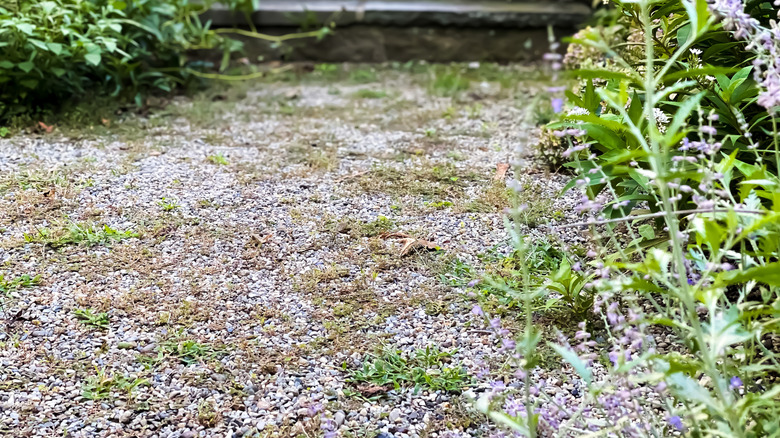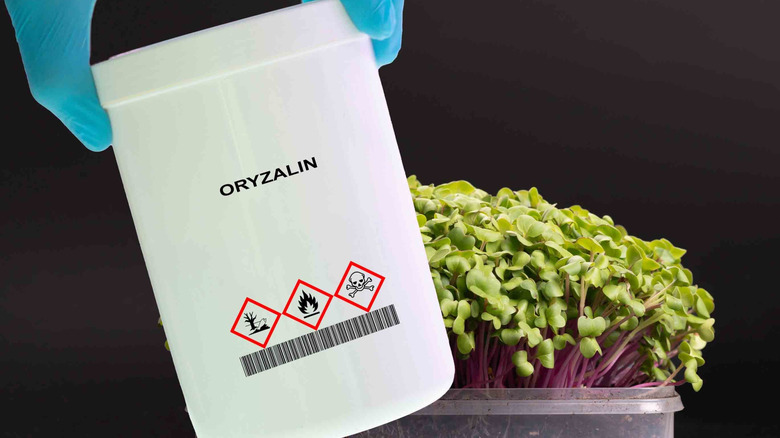How To Get Rid Of And Prevent Winter Weeds Growing In Gravel In Warmer Climates
It's not just the annual bluegrass (Poa annua), the bright, grassy weed that produces more than 350 seeds with each plant, that causes winter gardening woes. Several weeds will want you to spend the whole winter on your knees — not bothered that winter is the season to kick up your heels and relax. Weeds — whether winter or summer weeds — can turn a clean, elegant gravel driveway or patio into a space you're not proud of. And they can grow anywhere. Some thrive in moist, shady areas, others in full sun. Although you may not worry much about winter weeds growing on your gravel in frigid, Minnesota-like climates, don't expect the same level of assurance everywhere.
What happens with winter weeds is that many of their seeds lie dormant in the summer heat and then begin to germinate when temperatures start to drop. So, how do you get rid of weeds, particularly those pesky winter ones in your gravel? Don't even think of pulling them. This is because most winter weeds are soft and supple, partly because of the wetness that comes with the season. Therefore, they usually break at the stem and leave the roots in the ground, though a trowel can help you remove the whole weed. To prevent winter weeds from springing up, the best trick is to water in a pre-emergent.
Why watering in pre-emergent is the best thing to do to prevent winter weeds (and how to do it)
Pre-emergents are types of weed killers applied to the soil before weeds have time to grow and emerge. The idea with watering in your preferred pre-emergent is that this way, the pre-emergent binds well with the soil where the seeds would otherwise settle and grow. If not watered in, the pre-emergent will sit on top of the gravel or leaves and won't bind with the soil. Unfortunately, it will eventually break down because of exposure to ultraviolet rays. Simply put, you'll have done zero work.
So, when should you water in the pre-emergent? Read the label. Typically, you should water in the pre-emergent within 20 days of application. How much water is enough? Not so much as to flood the gravel and cause runoff, and not so little as to not bind meaningfully with the soil. At least an inch of water should do the job, provided you continue irrigating for three to five days afterward. Assume you apply the pre-emergent on the 1st day of the month, and water it in on the 12th, which is within the 20-day window, you should continue irrigating up to at least the 15th of the month. Just remember that granular pre-emergents typically need more water than liquid pre-emergents. Finally, as to eradicating winter weeds that have already sprung, apply a post-emergent herbicide, preferably as soon as you spot the weeds, provided the soil temperature is above 40 degrees Fahrenheit. Also, there should be no rain or strong wind for at least 24 hours.

